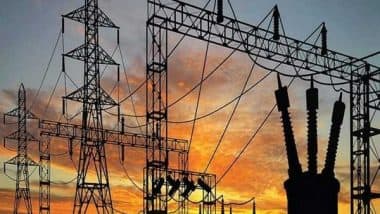New Delhi [India], April 28 (ANI): Delhi's peak power demand on Monday clocked 6015 MW in the afternoon during this summer season, the highest in 3 years, the State Load Dispatch Center (SLDC) said in a press release.
According to SLDC, "Delhi's peak power demand today clocked 6015 MW at 3:30 pm, highest in 3 years. Yesterday, Delhi's peak power demand was 5710 MW. On their part, BRPL and BYPL successfully met the peak power demand of 2590 MW and 1290 MW, respectively, in their areas."
SLDC said Delhi's power demand did not cross 6000 MW in April in both 2023 and 2024. In April 2023, it peaked at 5422 MW, and in April 2022, it peaked at 5447 MW.
Delhi is on the cusp of another historic power milestone. According to SLDC, after clocking a record power demand of 8656 MW in 2024, Delhi's peak power demand during the summers of 2025 may clock 9000 MW for the first time. Last year, Delhi's peak power demand crossed 8000 MW for the first time.
Peak power demand in the BSES Rajdhani Power Limited (BRPL) area of South and West Delhi, which had clocked 3809 MW during the summer of 2024, is expected to reach around 4050 MW during the summer of 2025. On the other hand, in BSES Yamuna Power Limited (BYPL's) area of East and Central Delhi, the peak power demand, which had reached 1882 MW during the summer of 2024, is expected to touch around 1900 MW this year.
BSES discoms are geared up to ensure a reliable power supply to meet the power demand of more than 50 lakh consumers and 2 crore residents in South, West, East, and Central Delhi. These arrangements include long-term PPAs and banking arrangements with other states and deployment of the latest technologies, such as AI and ML, for accurately predicting power demand, which is critical for ensuring a reliable power supply.
BSES has made power banking arrangements with many states, from where the discoms will get upto 500 MW of power during the summer months.
Over 2100 MW of Green power will play an important role in ensuring reliable power during the summer months in the BSES area.
Adding to these efforts are the advanced load-forecasting statistical and modelling techniques, which use Artificial Intelligence and Machine Learning to help the discom accurately forecast the power demand.
During the year, BSES discoms have strengthened the network and undertaken several unique measures to ensure a reliable power supply during the summer months. Apart from preventive maintenance, BSES has also done extensive predictive checks to identify hot spots or to pre-determine potential faults and to take remedial measures. This is done through thermal scanning, partial discharge measurement, and health assessment of power and distribution transformers. An online load monitoring system is also in place to track the power transformers & 11kv feeder load, especially during the summer. (ANI)
(This is an unedited and auto-generated story from Syndicated News feed, LatestLY Staff may not have modified or edited the content body)













 Quickly
Quickly















